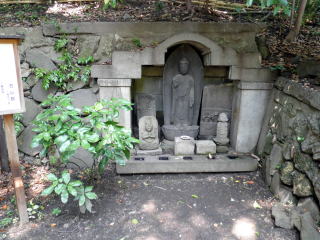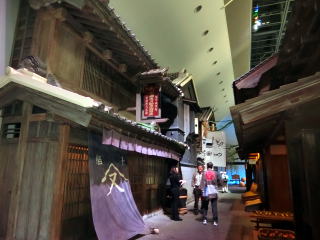KIYOSUMI GARDEN AND FUKAGAWA EDO MUSEUM
Vegetable store
1, KIYOSUMI GARDEN
There is an islet in the pond with a wooden
bridge. In Japanese garden an islet represents
heaven.
KIYOSUMI garden is located in northeastern Tokyo, so-called Sitamachi.
The northeastern area was city center of EDO city (now, Tokyo) during EDO
period.
We get there by HAZOMON and OEDO subway lines in less 20 minutes from central
TOKYO
and walk 3 minutes to the garden after getting off at KIYOSUMI-SHIRAKAWA
station.
Although the garden is relatively small with an area of 8.1 hectares, it
is very sophisticated and
elegant. So visitors get to know well in a short time what a Japanese garden
is.
It was constructed in the middle of 18th century when this place belonged to a feudal lord,
KUZE YAMATO NO KAMI. And Bunzaemon KINOKUNIYA, famous great merchant bought it
later and Yataro IWASAKI, leader of Mitsubishi conglomerate owned it in
Meiji period.
Now the garden belongs to Tokyo municipal government.
The ticket office and the gate
The garden has a big pond in its center and
a tea house at opposite shore.
Some big carps of 1 meter long are swimming.
This is a stone monument inscribed one famous
masterpiece poem of MATSUO Basho in
EDO period. The poem is "Kawazu tobikomu
Ikenooto".,which means "The ancient pond
a frog jumps in, the sound of the water."
Basho started there his trip of 2,400km for
TOHOKU region for 2 years in 1689 and
later issued a collection of poems,
"OKUNO HOSOMICHI", consisted of poems
composed during the trip.
A big stone lantern stands by RYOTEI,
tea house.
Shops and street
RYOTEI, tea house
Sushi vender and tea shop
Typical living room with tatami mats
There are a few small statues of Buddha
in a stone cave by the trail around the pond.
FUKAGAWA EDO museum is near KIYOSUMI garden, which displays replicas of
wooden old houses of Edo period.











